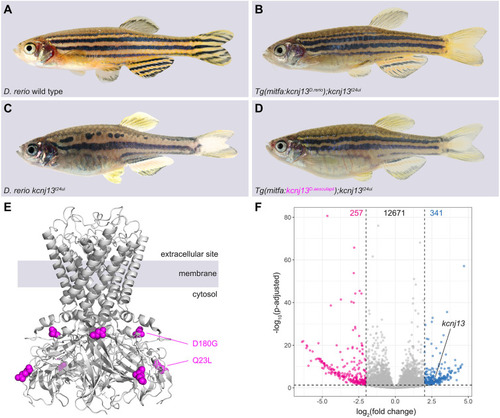
Molecular basis of kcnj13 evolution between D. rerio and D. aesculapii. (A-D) D. rerio wild type (A) and D. rerio kcnj13t24ui (B), in which either the D. rerio allele of kcnj13 [C; Tg(mitfa:kcnj13D.rerio);kcnj13tui24; n>50] or the D. aesculapii kcnj13 allele [D; Tg(mitfa:kcnj13D.aesculapii);kcnj13tui24; n>150] was expressed under the control of the mitfa promoter from D. rerio. In both cases, stripes were restored in the trunk of the fish. R224K was found to be polymorphic in D. aesculapii (Podobnik et al., 2020). (E) SWISS-MODEL derived homology model of the Kcnj13 tetramer (Q23L and D180G diverged between species in magenta). (F) Allele-specific transcriptome analysis, based on the D. rerio reference genome, shows higher kcnj13 expression of the D. rerio allele in the skin of interspecific hybrids (n=12; P-adjust<0.001). A similar expression bias is observed in the trunk of the hybrids (Fig. S3A); analysis of the same RNA-seq data using the D. aesculapii genome as reference yielded very similar results (Fig. S3B,C).
|